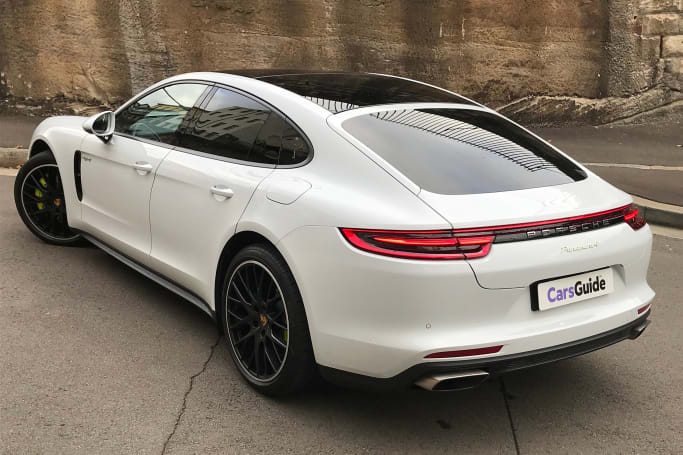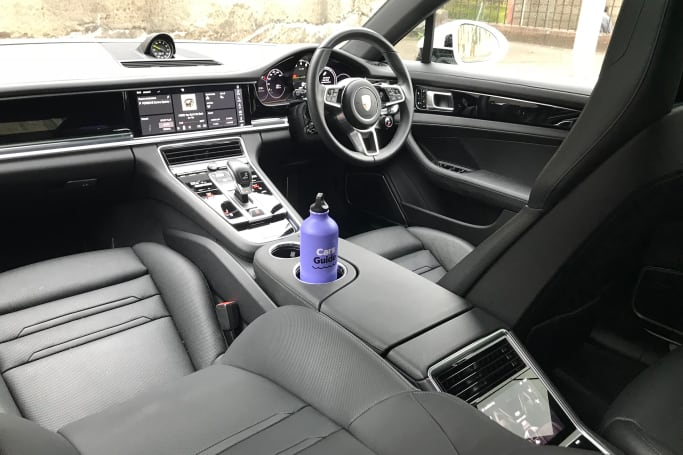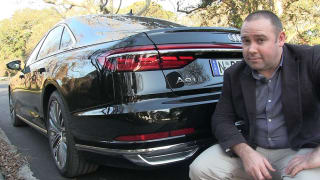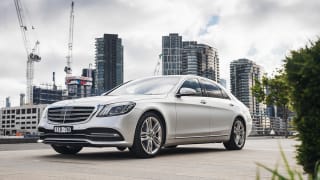The first-generation Panamera’s famously awkward profile reflected then Porsche CEO, Wendelin Wiedeking’s demand that its rear seat should be able to accommodate his lanky frame.
Since then, saner (and presumably lower) heads have prevailed, with the sleeker, sportier second-gen version fitting more easily into the sleek and slick Porsche-design mould.

Hints of the iconic 911 abound, from the turret’s smooth curve towards the rear, to the distinctive tail-lights, recognisable headlights and familiar nose treatment.
Screaming green brake calipers reinforce the eco-friendly message, as does a green halo around the ‘Panamera 4’ badge on the tail, and ‘e-hybrid’ labels on the front doors.
Optional 21-inch ‘Panamera SportDesign’ wheels, finished in high-gloss black, ($9380) replace the standard 19-inch rims to give our test car a more menacing and purposeful look.
The interior-design theme is shaped by a similar set of traditional elements. including the iconic five-dial main instrument cluster (with tacho in the centre), chunky sports steering wheel, and chrono clock on the dashtop. The leather-trimmed sports seats (front and rear) feature a high, one-piece backrest, echoing those of Porsches past and present.

Not so familiar is the flight-deck-style dash, including a 12.3-inch high-res touchscreen media display, and maxi-size centre console housing touch-sensitive switchgear in place of Porsche’s usual array of knobs and buttons.
Rear-seat passengers are presented with an ultra-slick touchscreen display, integrated into the extended centre console, to manage their climate control, nav and media settings.
The optional ambient-lighting package ($990) fitted to our test car added a subtle green keyline glow to the door speaker surrounds front and rear.
Overall, the design manages to successfully combine slick luxury and comfort with clear sporting intent.
















